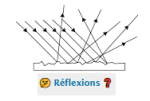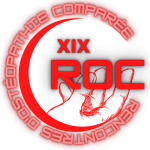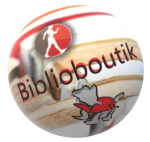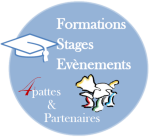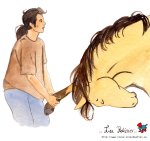Un ensemble d’articles sur les troubles temporo-mandibulaires et oro-faciaux

- Troubles temporomandibulaires. Partie 1 : anatomie et examen / diagnostic - Partie 2 : gestion conservatrice
- Réduction de la douleur de la tête et du visage en contestant la latéralisation et les émotions de base : une proposition pour des stratégies d’évaluation et de réadaptation futures
- Mal de tête chronique post-traumatique : résultats cliniques et mécanismes possibles
- Raisonnement clinique pour la gestion de la thérapie manuelle de la céphalée de tension et du mal de tête cervicogénique
Merci à Jean-Louis Estrade et à Actu-Kiné pour ces informations
Temporomandibular disorders. Part 1 : anatomy and examination/diagnosis
Stephen M. Shaffer, Jean-Michel Brismée, Phillip S. Sizer, Carol A. Courtney. Temporomandibular disorders. Part 1 : anatomy and examination/diagnosis. Volume 22, Issue 1 (February 2014). Journal of Manual & Manipulative Therapy. pp. 2–12.
Abstract
Temporomandibular disorders (TMD) are a heterogeneous group of diagnoses affecting the temporomandibular joint (TMJ) and surrounding tissues. A variety of methods for evaluating and managing TMD have been proposed within the physical therapy profession but these sources are not peer-reviewed and lack updates from scientific literature. The dental profession has provided peer-reviewed sources that lack thoroughness with respect to the neuromusculoskeletal techniques utilized by physical therapists. The subsequent void creates the need for a thorough, research informed, and peer-reviewed source regarding TMD evaluation and management for physical therapists. This paper is the first part in a two-part series that seeks to fill the current void by providing a brief but comprehensive outline for clinicians seeking to provide services for patients with TMD. Part one focuses on anatomy and pathology, arthro- and osteokinematics, epidemiology, history taking, and physical examination as they relate to TMD. An appreciation of the anatomical and mechanical features associated with the TMJ can serve as a foundation for understanding a patient’s clinical presentation. Performance of a thorough patient history and clinical examination can guide the clinician toward an improved diagnostic process.
Keywords : Diagnosis, Physical examination, Review, Temporomandibular joint disorders
- Lire l’article
Temporomandibular disorders. Part 1 : anatomy and examination/diagnosis (accès libre).
Temporomandibular disorders. Part 2 : conservative management
Stephen M. Shaffer, Jean-Michel Brismée, Phillip S. Sizer, Carol A. Courtney. Temporomandibular disorders. Part 2 : conservative management. Volume 22, Issue 1 (February 2014). Journal of Manual & Manipulative Therapy. pp. 13–23.
Abstract
Appropriate management of temporomandibular disorders (TMD) requires an understanding of the underlying dysfunction associated with the temporomandibular joint (TMJ) and surrounding structures. A comprehensive examination process, as described in part 1 of this series, can reveal underlying clinical findings that assist in the delivery of comprehensive physical therapy services for patients with TMD. Part 2 of this series focuses on management strategies for TMD. Physical therapy is the preferred conservative management approach for TMD. Physical therapists are professionally well-positioned to step into the void and provide clinical services for patients with TMD. Clinicians should utilize examination findings to design rehabilitation programs that focus on addressing patient-specific impairments. Potentially appropriate plan of care components include joint and soft tissue mobilization, trigger point dry needling, friction massage, therapeutic exercise, patient education, modalities, and outside referral. Management options should address both symptom reduction and oral function. Satisfactory results can often be achieved when management focuses on patient-specific clinical variables.
Keywords : Conservative management, Review, Temporomandibular joint disorders.
- Lire l’article
Temporomandibular disorders. Part 2 : conservative management. (accès libre).
Reduction of head and face pain by challenging lateralization and basic emotions
A proposal for future assessment and rehabilitation strategies
Harry von Piekartz,Gesche Mohr. Reduction of head and face pain by challenging lateralization and basic emotions : a proposal for future assessment and rehabilitation strategies. Volume 22, Issue 1 (February 2014). Journal of Manual & Manipulative Therapy. pp. 24–35.
Abstract
Chronic facial pain has many of the clinical characteristics found in other persistent musculoskeletal conditions, such as low back and cervical pain syndromes. Unique to this condition, however, is that painful facial movements may result in rigidity or altered ability to demonstrate mimicry, defined as the natural tendency to adopt the behavioral expressions of other persons involved in the interaction. Loss of ability to communicate through emotional expression can lead to impaired processing of emotions and ultimately social isolation. Diminished quality and quantity of facial expression is associated with chronic face pain, tempromandibular dysfunction, facial asymmetries, and neurological disorders. This report provides a framework for assessment of impaired emotional processing and associated somatosensory alterations. Principles for management for chronic facial pain should include graded motor imagery, in addition to standard treatments of manual therapy, exercise, and patient education. A case study is provided which illustrates these principles.
Keywords : Head and facial pain, Lateralization, Emotion recognition and expression, Graded Motor Imagery, Rehabilitation.
- Lire l’article
Reduction of head and face pain by challenging lateralization and basic emotions (accès libre).
Chronic post-traumatic headache : clinical findings and possible mechanisms
Ruth Defrin. Chronic post-traumatic headache : clinical findings and possible mechanisms. Volume 22, Issue 1 (February 2014). Journal of Manual & Manipulative Therapy. pp. 36–43.
Abstract
Chronic post-traumatic headache (CPTHA), the most frequent complaint after traumatic brain injury (TBI), dramatically affects quality of life and function. Despite its high prevalence and persistence, the mechanism of CPTHA is poorly understood. This literature review aimed to analyze the results of studies assessing the characteristics and sensory profile of CPTHA in order to shed light on its possible underlying mechanisms.
The search for English language articles published between 1960 and 2013 was conducted in MEDLINE, CINAHL, and PubMed. Studies assessing clinical features of headache after TBI as well as studies conducting quantitative somatosensory testing (QST) in individuals with CPTHA and in individuals suffering from other types of pain were included. Studies on animal models of pain following damage to peripheral tissues and to the peripheral and central nervous system were also included.
The clinical features of CPTHA resembled those of primary headache, especially tension-type and migraine headache. Positive and negative signs were prevalent among individuals with CPTHA, in both the head and in other body regions, suggesting the presence of local (cranial) mechanical hypersensitivity, together with generalized thermal hypoesthesia and hypoalgesia. Evidence of dysfunctional pain modulation was also observed.
Chronic post-traumatic headache can result from damage to intra- and pericranial tissues that caused chronic sensitization of these tissues. Alternatively, although not mutually exclusive, CPTHA might possibly be a form of central pain due to damage to brain structures involved in pain processing. These, other possibilities, as well as risk factors for CPTHA are discussed at length.
Keywords : Chronic pain, Traumatic brain injury, Headache, Mechanisms
- Lire l’article
Chronic post-traumatic headache (accès libre).
Clinical reasoning for manual therapy management of tension type and cervicogenic headache
César Fernández-de-las-Peñas,Carol A. Courtney. Clinical reasoning for manual therapy management of tension type and cervicogenic headache. Volume 22, Issue 1 (February 2014). Journal of Manual & Manipulative Therapy. pp. 45–51.
Abstract
In recent years, there has been an increasing knowledge in the pathogenesis and better management of chronic headaches. Current scientific evidence supports the role of manual therapies in the management of tension type and cervicogenic headache, but the results are still conflicting. These inconsistent results can be related to the fact that maybe not all manual therapies are appropriate for all types of headaches ; or maybe not all patients with headache will benefit from manual therapies. There are preliminary data suggesting that patients with a lower degree of sensitization will benefit to a greater extent from manual therapies, although more studies are needed. In fact, there is evidence demonstrating the presence of peripheral and central sensitization in chronic headaches, particularly in tension type. Clinical management of patients with headache needs to extend beyond local tissue-based pathology, to incorporate strategies directed at normalizing central nervous system sensitivity. In such a scenario, this paper exposes some examples of manual therapies for tension type and cervicogenic headache, based on a nociceptive pain rationale, for modulating central nervous system hypersensitivity : trigger point therapy, joint mobilization, joint manipulation, exercise, and cognitive pain approaches.
Keywords : Tension type headache, Cervicogenic headache, Pain, Sensitization, Spine, Trigger points, Manual therapy.
- Lire l’article
Clinical reasoning for manual therapy management of tension type and cervicogenic headache (accès libre).

